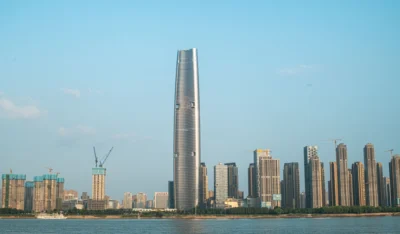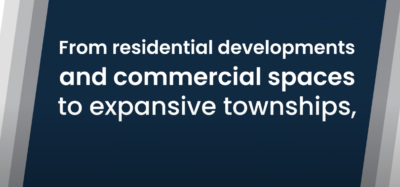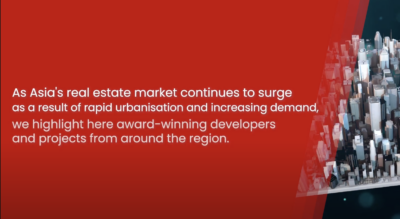Meet the diverse group of disruptors taking things offline
While tech innovations tend to hog the headlines, a multitude of other real estate start-ups are rebooting familiar concepts in fresh ways to appeal to the millennial generation

Back in 1908, retail disruptor Sears Roebuck & Co started selling prefabricated houses via its ubiquitous catalogue.
For as little as USD500, or about USD12,000 today accounting for inflation – because the company owned the manufacturers – you could get a massive kit to put together your new home, and while the options included little starter cottages, there were also more expensive rambling suburban mini-manses, ranch houses, Colonials and Tudors.
Sears had sold some 75,000 houses by the time they got out of the business in 1940, but over the intervening generations, “prefab” has come to be synonymous with low-quality, cheap and generic buildings.
In 2015, Robbie Antonio decided to change that. With a diverse group of world-class collaborators signed on, Antonio – scion of the Antonio clan, founders of giant Philippine developer Century Properties – launched Revolution Precrafted, a property company starring a line of swank but small modular homes each limited-edition and conceived by a famous architect and/or interior designer that customers can select from their website, order from their proprietary factories, and ship anywhere in the world.
Antonio’s unicorn – it recently became the first Philippine start-up ever to reach a valuation of USD1 billion – sounds decidedly next-gen. But in a way it’s not so different from the Sears catalogue of yore.
And, he’s not alone. He’s the biggest name among a class of disruptors in residential real estate ever-so-subtly adjusting the market to the way people live in a practical manner, offering structural and communal amenities they want rather than flashy new tech they need to learn.
From group lessons with yoga teachers and professional mentors, to the tidal wave of companies offering stylish affordable or even rental furniture, these businesses and start-ups are catering to modern needs, tastes and family structure, but are rooted in old-school ideas and values. As they say, everything old is new again.
Bringing design not to the masses but to just the right niche of the upwardly mobile is one of the key tenets we can ascribe to this generation of disruptors. Antonio is collaborating with a list of luminaries that includes several globally renowned design stars, starchitects and Pritzker Prize-winners, such as the late Zaha Hadid, Kengo Kuma, Daniel Libeskind, Jean Nouvel, Daphne Guinness, Carlos Zapata and Lenny Kravitz.
“There is a growing trend towards more dynamic, unconventional spaces, as compared to static environments,” Antonio says. “Each Revolution pavilion and home is individually branded by its designer’s personal concept of spatial form and social function. The result is a diverse and global collection of architecturally innovative, pre-crafted properties.”
“With a network of cutting-edge technologies and cost-efficient production systems, Revolution is democratising high-design and architecture,” he adds.
Once ordered, Revolution homes take 90 days to build, about a month to ship, and just five days to assemble on-site. By contrast, up to 30,000 individual parts came in a Sears home kit back in the day. In fact, the inconvenience of DIY has unleashed the floodgates of anti-IKEA big ideas.
Several companies in the US have sprung up in the past couple of years pegging their hopes on a single item or a curated handful of stylish furniture at a mid-tier price point that requires minimal assembly. Detroit-based Floyd exclusively makes a birch-and-steel bed frame in three sizes, starting at USD498, while Burrow offers a modular sofa in three sizes and five colours from USD550. “Wouldn’t it be great if a furniture company built a couch that actually fit the way people live their lives?” Burrow’s cofounder Stephen Kuhl told the New York Post.
Young adults increasingly live nomadically, untethered to full-time jobs, unattached to specific apartments, neighbourhoods or cities. With the motto ‘Furniture rental for millennials on the move, Feather operates in New York and San Francisco. It leases single pieces or suites in monthly increments for as few as three months. You can rent a lamp for USD5 a month, an aircon unit for USD27, or a nice couch for USD107.
The model, of course, recalls rent-to-own furniture stores, but manages to bring a cachet of cool instead of crap. “What we have going for us is that IKEA is such a pain,” founder Jay Reno told TechCrunch. They also have young, moderately price-sensitive customers who want to show off their style, but don’t want to take it with them.
This may be a less-viable business model in Southeast Asia, where so many rentals come furnished, but another company disrupting the housing market because of changing socio-dynamic norms is Thailand-based MQDC, who counts among their priorities “cultivating a knowledge-driven society.”
The developer’s Whizdom brand, targeted at young professionals, currently has two condo buildings in Bangkok that offer virtual sports along with the standard pool and fitness centre, and run a library, co-working and social space purposefully to not only encourage collaboration among residents, but also introduce them to heath, business and intellectual gurus.
The Magnolia housing brand, meanwhile, actively designs its private and public spaces and amenities with a tri-generational family in mind, encouraging a harmonious collective lifestyle for kids, parents and grandparents.
“MQDC uses insights from psychology and other research fields to develop living ecosystems that provide true well-being, and it realizes these with innovations in design and sustainability,” according to their mission statement.
Revolution is getting into this curated lifestyle business as well. They recently inked a deal to build 7,100 homes in Revolution Flavorscapes at Lakeshore, a so-called “famileisure” compound in Pampanga Province in the Philippines. Revolution predicts USD345 million in revenues from the first phase of the project, which they are calling the world’s first liveable food park. Boasting pop-up stores featuring cuisines from 200 countries, it will be a literal homebase for foodies, who can bond around their shared love of food.
WE QUICKLY REALISED THAT THE BIGGER UMBRELLA TO WELLNESS IS COMMUNITY
Community as key to well-being was the impetus behind American start-up hOM, which organises wellness, social and networking programmes in residential (and commercial) buildings. The idea was borne out of a bittersweet story. After being diagnosed with stage 3 ovarian cancer, the mother of one of the cofounders was prescribed yoga and meditation, which doctors credited with extending her life eight more years.
“We quickly realised that the bigger umbrella to wellness is community,” says business and marketing strategist Brenda Umana. “Consumers are craving human experiences that build connection. Any kind of bringing people together was going to be beneficial for anyone’s health and well-being.”
hOM started with yoga and meditation, and, working on the theory that proximity breeds familiarity, soon moved into community events, workshops, social functions. “If people know it’s going to be a small studio, with their neighbours or co-workers, and conveniently located in the property they live or work, there’s a bigger sense of comfort,” Umana says.
The firm works with new builds and established properties looking for added-value for their tenants, assigning a dedicated manager to run their programming out of underutilised spaces such as lobbies, lounges, rooftops, and even in vacant apartment units and raw floors. Though the programming is of course meant for everyone, the two populations they’ve seen with the highest usage are young professionals and new families, both of whom have busy lives in and out of work.
Developers, owners and property managers use hOM as a marketing and leasing tool, and find that they can charge higher rents. According to one survey, 69 percent of tenants in hOM-serviced buildings said they signed their lease due to this perk. Even more important might be the effect on tenant retention. “It costs a building anywhere from USD5,000 to USD7,000 to turn over a unit and to have it on the market for, say, 30 days. Keeping tenants with fitness and events helps them get to know their neighbours and build community,” says Umana. “On average, in a 300-unit property we will save the landlords USD126,000 in turnover costs.”
Just like Henry Ford’s factory towns of a hundred years ago, where he built schools and paid doctor bills for his workers, disruptors aren’t disrupting out of sheer altruism. Sure, encouraging residents to get healthy by stretching with hOM is good for heart and soul, but it’s also productive for the bottom line.
The evidence? Now in New York and New Jersey, hOM is expanding in the US, with plans to add one more city per year over the next few years. As for Revolution Precrafted’s Antonio, he’s looking first to 20 major international markets in North America, Asia, Europe, and Middle East, but also opportunities in non-traditional destinations such as Brazil, Argentina, and Trinidad and Tobago. “This is to cater to the new breed of customers who seek bespoke structures that represent who they are, and what they are all about,” Antonio says.
This article originally appeared in Issue No. 147 of PropertyGuru Property Report Magazine
Recommended
6 developments driving Asia’s green real estate shift
Developers are being incentivised to push a green agenda into daring new realms
The Philippines’ LIMA Estate drives sustainable industrial growth
LIMA Estate models a citywide vision that uplifts workers while appealing to climate-conscious employers
Malaysia property market rebounds with foreign interest and growth
The nation’s property market is stirring to life, fuelled by foreign buyers and major infrastructure drives
China’s renewable energy surge redefines housing norms and development
From exporting solar panels to building entire green-powered neighbourhoods, China’s renewable surge is redefining housing norms












